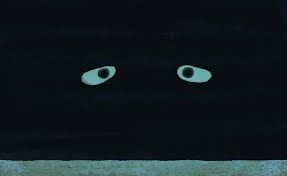The art of the wordless spread is a thing of beauty. It leaves room for the reader to react to the story without being told how to feel or what to think. It gives the reader time to pause and reflect on the character’s emotions or the impact of a special moment in the story. It can evoke sorrow, laughter, triumph, defeat. A wordless spread is my absolute favorite part of any picture book. Here are just a few stellar ones I’ve come across.
In EXTRA YARN by Mac Barnett and Jon Klassen, the wordless spread falls on the second-to-last spread of the book. At that point, the reader has journeyed along with Annabelle, the main character, and her magic box of yarn. It is the perfect moment for the author to step back and let the art capture the moment.

In SHORTCUT by Donald Crews (an oldie but goodie), I’m going to argue that there are several wordless spreads, with one being completely wordless and four containing repeating onomatopoeia. These spreads convey emotion that no well-crafted sentence could. The reader sees what the characters see, page spread after page spread and, in turn, feels what they feel.

In BEEKLE by Dan Santat, the wordless spread occurs when Beekle finds the one thing he’s been looking for; perfectly capturing what I’ve heard Julie Hedlund refer to as the “heart moment.”

In CREEPY PAIR OF UNDERWEAR by Aaron Reynolds and Peter Brown, a completely black page spread is so simple, so brilliant, and so effective. How better to convey just how dark it is in Jasper Rabbit’s bedroom without the greenish glow of creepy underwear?

In CHARLOTTE THE SCIENTIST IS SQUISHED by Camille Andros and Brianne Farley, there are two wordless spreads. Both help to convey a major change in setting, a technique I have not seen before with wordless spreads but it works perfectly for the tone and pacing of the book.

In I WILL NOT EAT YOU by Adam Lehrhaupt and Scott Magoon, the wordless spread enhances the mystery of Theodore, who lives in a cave and is not revealed to the reader in the beginning of the book. It also signals a turning point in the story.

Which books would you add to this list?
*Featured image from I WANT MY HAT BACK by Jon Klassen


Great post, Kim! Another wonderful book with a wordless spread = A SICK DAY FOR AMOS MCGEE, oh and also: MR TIGER GOES WILD. 🙂
LikeLike
Great topic! I would add an oldie but a goodie: Where the Wild Things Are. The wordless spreads in that book are just perfect! And done by the brilliant Maurice Sendak long before it was a thing.
LikeLike
Terrific post with great examples. What a impactful, but under-used tool we have to work with.
LikeLike
It gets me every time, David, and I love it! Thanks for reading!
LikeLike
Kim, what a great post! Thank you for listing such interesting books. I will add a well-known favorite: Where the Wild Things Are by the tremendously talented author-illustrator Maurice Sendak. There are actually 3 wordless spreads in a row, following these apt words by Max: “let the wild rumpus start!” I must say, hats off to all those talented author-illustrators out there!!
LikeLike
Yes, Laura! Great example! Thanks for reading!
LikeLike
Thanks for this post. It gives me, as a writer, a lot to think about.
LikeLike
Thanks for reading, Rosi!
LikeLike
Love this post, Kim!
LikeLike
Thanks, Keri! 🙂
LikeLike
So agree with you on the impact of wordless spreads (single or double). I’m not sure but I believe that the excellent PB What Do You Do With a Problem? and its companion What Do You Do With an Idea? have also stunning worldless spreads.
LikeLike
I can’t remember for sure with those texts, either, but they are stunning examples of picture books. Thanks for reading and commenting!
LikeLiked by 1 person
Whether for the sigh awww, or the eeek! I love the pause and the emotional ‘let-it-all-sink-in’ moment of a wordless spread.
LikeLike
Yes! Yes! Yes! Thanks for reading and commenting, Kim!
LikeLike
So interesting. I’ve just started exploring the wordless spread…for me it’s partly a stepping back and giving the stage over to the illustrator, but it’s also a sort of caesura…gives the story a moment to turn.
LikeLiked by 1 person
Exactly, Sara. When done well, they are so powerful. Thanks for reading and commenting!
LikeLike